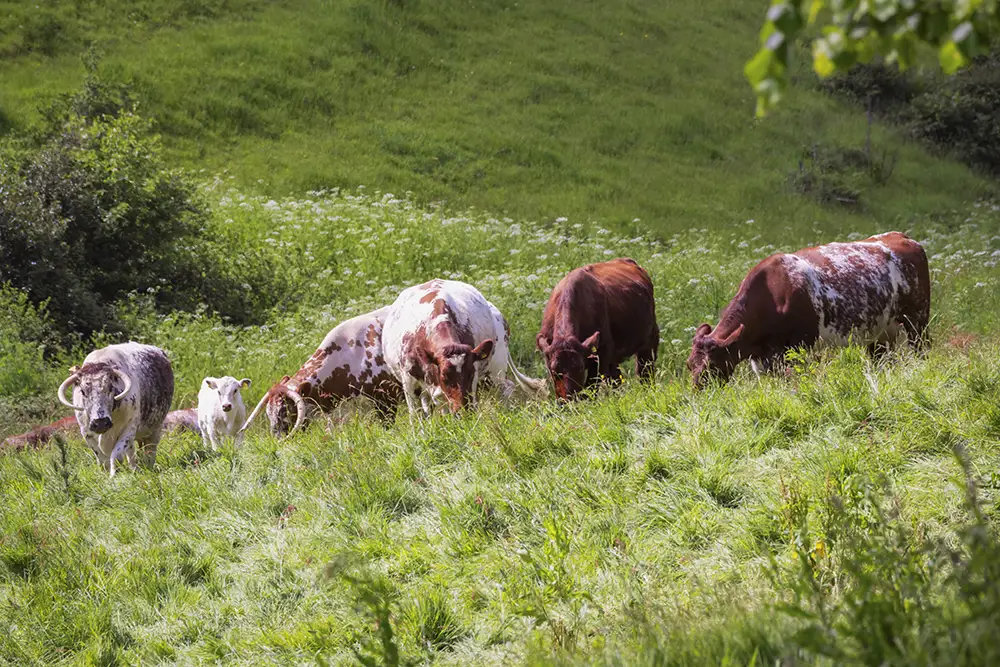
Working with the land
We explain why the UK’s landscape is perfect for regenerative livestock
The UK’s rolling hills, temperate climate, and rich grasslands make it ideal for regenerative livestock farming.
Much of the UK is made up of uneven terrain, uplands, shallow, peaty, light sandy or clay soils that aren’t suitable for growing crops but are ideal for grasslands (Converting Grazing Land to Arable ‘Unsustainable’ in West Country and Other Parts of Northern Europe | Rothamsted Research). By grazing animals on this land, farmers make productive use of areas that might otherwise be left unused, all while maintaining the patchwork of fields, hedgerows, and pastures that define our rural landscape.
Regenerative livestock management relies on a well-designed grazing plan that prevents overgrazing and maximises grassland recovery, root growth, and biodiversity. By using rotational or mob grazing systems, moving animals frequently and allowing pastures to have sufficient rest, farmers encourage a denser, healthier grassland cover that supports biodiversity and long-term grassland resilience. This, in turn, improves the soil structure and health, develops a strong root network that stabilises the soil, reduces erosion, improves water holding capacity and increases carbon storage.
Livestock play an important role in managing and protecting these environments. As they graze, they act as natural mowers, encouraging new, more diverse growth, and preventing scrub from taking over. Their manure returns nutrients to the soil, feeding the organisms that keep it alive, while their movement gently aerates the soil and improves infiltration. Especially in areas where it is inefficient for machinery such as steep hillsides, wetlands, or uplands, livestock become the most efficient land managers we have.
These systems make efficient use of nature’s resources. Cows and sheep are ruminants which means their digestive system provides them with the ability to convert grasses and forages that humans can’t eat into nutrient dense meat that we can. In doing so, they upcycle otherwise inedible biomass into food rich in protein, vitamins, and minerals, without competing with land that could grow crops for people. While pigs cannot digest grass like ruminants, outdoor reared pigs forage on a range of non-human edible food such as certain nuts, leaves and shoots as well as many by products from food production that would otherwise go to waste, turning them into high quality protein.
For the animals themselves, regenerative systems offer a life that supports their welfare. Pigs can forage and explore as they naturally should, whilst cattle and sheep can range freely, graze, and express their instinctive herd behaviours. They live as part of the landscape rather than apart from it, which supports calmer, healthier animals and better overall welfare.
At Rare & Pasture, we work with British farmers who understand the power of this relationship between land and livestock. Their animals help regenerate the landscapes they graze, protect our countryside, and create the nutrient dense, great tasting meat that forms the basis of our product range. By working with the land, not against it, regenerative farming keeps the countryside thriving and brings exceptional flavour to every bite.